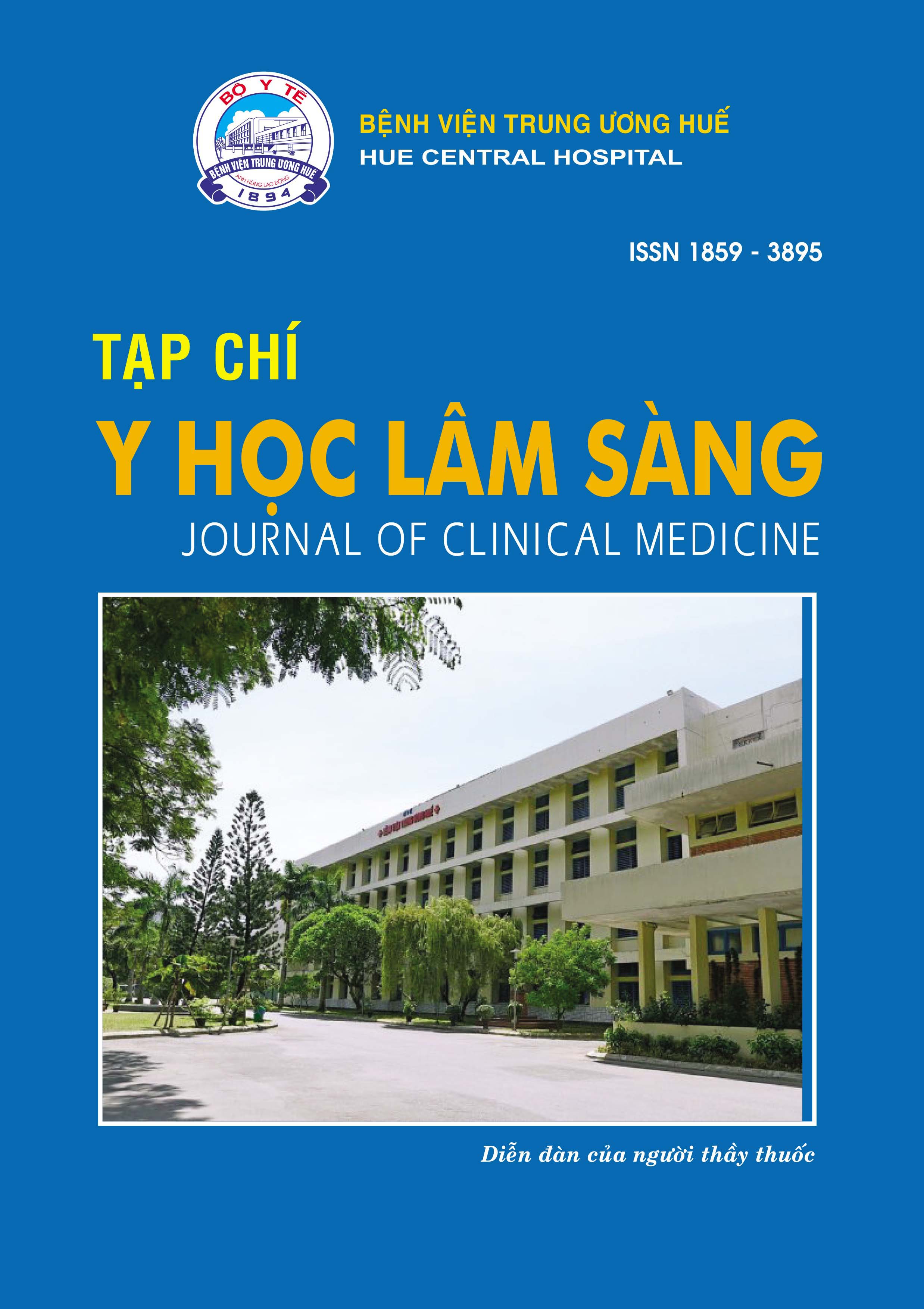Tóm tắt
Mục tiêu: (1) Khảo sát đặc điểm các biến chứng cấp ở bệnh nhân đột quỵ nặng điều trị tại Trung tâm đột quỵ, Bệnh viện Trung Uơng Huế; (2) Đánh giá hiệu quả công tác chăm sóc người bệnh trong dự phòng và điều trị các biến chứng cấp sau đột quỵ.
Đối tượng và phương pháp nghiên cứu: Đánh giá trên 100 bệnh nhân đột quỵ nặng với điểm Glasgow lúc nhập viện 5-12 có tỉ lệ các biến chứng viêm phổi, loét do đè ép, mất cân bằng dinh dưỡng, tăng đường máu lần lượt là 14%, 5%, 6% và 12%. 100%; bệnh nhân được áp dụng các quy trình chăm sóc toàn diện và cá nhân hóa.
Kết quả: Tỉ lệ bệnh nhân phục hồi chức năng tốt là 29%, 100% bệnh nhân xuất viện không còn viêm phổi và mất cân bằng dinh dưỡng, tỉ lệ loét do đè ép lúc xuất viện là 1%, 42% trong số bệnh nhân có tăng đường máu có chỉ số đường máu bình thường khi xuất viện và không còn chỉ định dùng Insulin.
Tài liệu tham khảo
Powers, W.J., et al., 2015 American Heart
Association/American Stroke Association
focused update of the 2013 guidelines for the
early management of patients with acute ischemic
stroke regarding endovascular treatment: a
guideline for healthcare professionals from the
American Heart Association/American Stroke
Association. Stroke, 2015. 46(10): p. 3020-3035.
Reeves, M.J., et al., Sex differences in stroke:
epidemiology, clinical presentation, medical
care, and outcomes. The Lancet Neurology,
7(10): p. 915-926.
Kissela, B.M., et al., Age at stroke: temporal
trends in stroke incidence in a large, biracial
population. Neurology, 2012. 79(17): p. 1781-
Tobi, K. and N. Okojie, characteristics and
outcome of stroke patients with cerebrovascular
accident at the intensive care unit of a tertiary
hospital in nigeria. Journal of the West African
College of Surgeons, 2013. 3(1): p. 1.
Venketasubramanian, N., et al., Stroke
epidemiology in south, east, and south-east Asia:
a review. Journal of stroke, 2017. 19(3): p. 286.
Martino, R., et al., Dysphagia after stroke: incidence,
diagnosis, and pulmonary complications. stroke,
36(12): p. 2756-2763.
Saied, W.I., et al., A comparison of the mortality
risk associated with ventilator-acquired bacterial
pneumonia and nonventilator ICU-acquired
bacterial pneumonia. Critical care medicine,
47(3): p. 345-352.
Bruno, A., et al., Acute blood glucose level and
outcome from ischemic stroke. Neurology, 1999.
(2): p. 280-280.
Amir, Y., Quality of pressure ulcer care in
Indonesian hospitals. 2015.
Corrigan, M.L., et al., Nutrition in the stroke
patient. Nutrition in Clinical Practice, 2011.
(3): p. 242-252.
Chai, J., et al., Prevalence of malnutrition and
its risk factors in stroke patients residing in an
infirmary. Singapore medical journal, 2008.
(4): p. 290.
J Prosser-Loose, E., et al., Protein-energy
malnutrition alters hippocampal plasticityassociated protein expression following global
ischemia in the gerbil. Current neurovascular
research, 2010. 7(4): p. 341-360.
Feigin, V.L., B. Norrving, and G.A. Mensah,
Global burden of stroke. Circulation research,
120(3): p. 439-448.
Bösel, J., Use and timing of tracheostomy after
severe stroke. Stroke, 2017. 48(9): p. 2638-2643.
| Đã xuất bản | 08-01-2025 | |
| Toàn văn |
|
|
| Ngôn ngữ |
|
|
| Số tạp chí | Số 63 (2020) | |
| Phân mục | Nghiên cứu | |
| DOI | 10.38103/jcmhch.2020.63.11 | |
| Từ khóa |

công trình này được cấp phép theo Creative Commons Attribution-phi thương mại-NoDerivatives 4.0 License International .
Bản quyền (c) 2020 Tạp chí Y học lâm sàng Bệnh viện Trung Ương Huế

